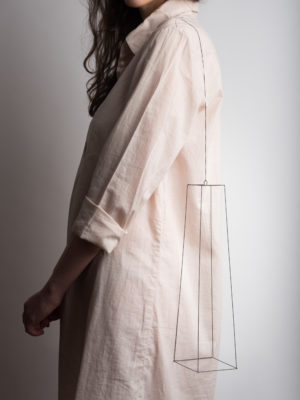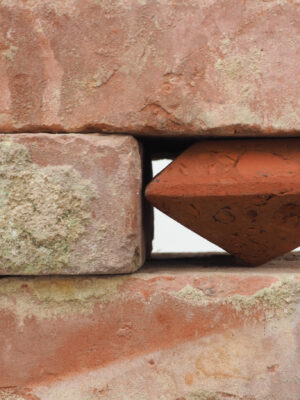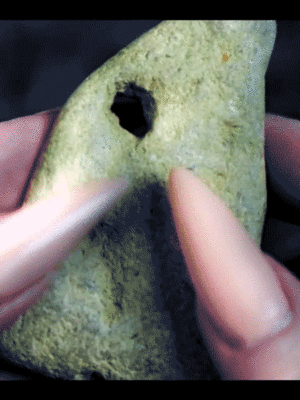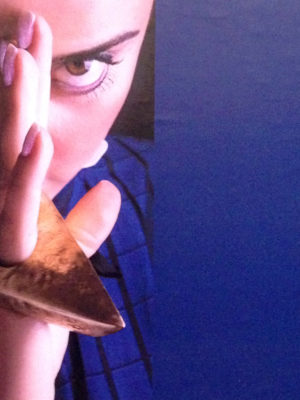In a group exhibition, there is the additional challenge of making all these already complex harmonies work together in a new superstructure, testing differences to seek common ground, accepting weaknesses to create strength, giving up control to enhance cooperation. Kontrapunkt wants to show artists in their liminal thinking and doing as they interrogate their boundaries, as they explore and exploit imbalance, as they deconstruct in order to construct, as they struggle through chaos in order to seek a new equilibrium.
But Kontrapunkt wishes also to show that if one single voice contains already the depth of a full choir, when a group of distinct voices comes together, the energy of their polyphony has the power to multiply, reverberate and resonate, like an irregular crystal under the sun, and to promote a model of living in the world of independent interdependence where the complex potential of the intersecting beams is always stronger than that of its individual rays.
About this interview
Kontrapunkt was born as a rather small exhibition project, and then it started growing. It grew by adding new voices, new harmonies. But also it grew organically to represent much more than the individual projects to be exhibited. As we began working together, we started establishing it as a natural place for collaborative practices based on shared responsibilities and collective decision-making processes. Technology allowed us to connect across countries, and our meetings became more and more frequent, especially towards the end. We soon realised that these processes were just as much part of the concept of what kontrapunkt is: allowing other voices a space, being able to take control but also to relinquish it as necessary, playing on each other’s strengths and understanding our own weaknesses, without judgment and for the benefit of the group.
As we planned our openings programme, we thought it would be great to have an in-conversation event, where we could be moderators as well as participants, and where we could make visible to our visitors this process of collaboration, and talk not just about our individual projects but about what it is like to practise art, and to practise art together. Then the opportunity came to talk to Current Obsession about our project, and the way we have chosen to do this is not through traditional quotes or descriptions but through a cross-interview. Of course, the questions and answers also reveal the importance of diversity in our group, and learning – about ourselves and about others – what and how much we and they are comfortable asking and answering, and how. Accordingly, these questions and answers have been subjected only to very minimal editing. This has in itself then become a powerful working tool to understand our processes and projects as individuals and as a group, and it will become very important in the documenting of our project.
Lieta Marziali
Vica to Rita:
V: We often – directly or indirectly – speak about ourselves through the medium of jewellery, but creating a series of self-portraits is a straightforward way of self-articulation. Why did you choose this form of expression?
R: I did not choose this; it started with self-monitoring and observation of my demeanour and reactions because I noticed that in some situations, I do not behave the way I planned before. There I found it hard to articulate my thoughts without somebody misunderstanding me. I am very curious about why this can happen when talking to people close to me. So I started by facing myself, trying to understand what people can read on my face when talking to me.
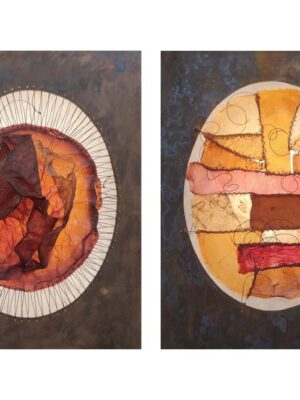
V: Did you discover anything new about yourself during the design and making process?
R: During my self-observations, I realized that I often follow my old patterns in a conversation, and maybe this pulls me back from solving my dilemmas. My reactions have much more components than I could imagine, making the challenge even more complex.
Luca to Rita:
L: You often use different techniques and alternative materials in your artistic practice. Do you feel the special importance of them to express yourself in this new project?
R: The kombucha leather I was using in these series came accidentally from my original curiosity about bio-design. In the last few years, I had broad research about my roots and what makes me the woman I am. I observed the rivers under my skin guiding many of my actions, and I was seeking a medium which could visualize this invisible relationship. I knew immediately when I saw this material that I had found something to play with. A little bit weird, or even disgusting, transparent, changes through the years and grows from nature very slowly like human beings.
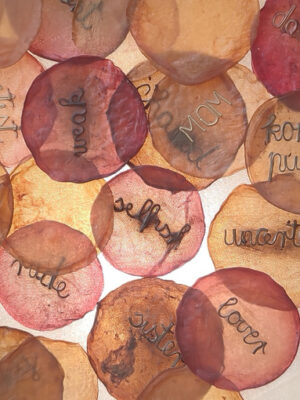
L: Are the chosen words in your pieces describing you or who you want to be?
R: After scanning some of my characteristic faces, I identified my specific feelings; the roles played in different situations. The words I wrote under the skin pieces have all been detected in me during the last months. Some of them surprised me. The only rule in this game was to be honest, and suspicious with myself. This list of components is very thought-provoking, like facing a mirror. I hope the answers to my questions are behind it.
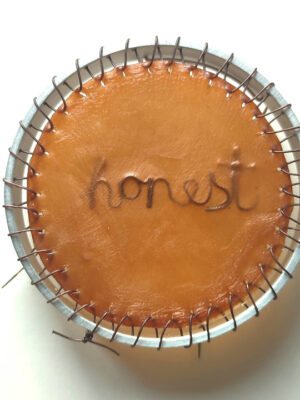
Vica to Luca:
V: What is the most significant difference between your previous works and the currently exhibited collection?
L: Maybe the currently exhibited pieces are visually closer to a classic jewellery collection than my previous works, although they also have a conceptual background. This time I used precious metal, pearls, minerals, so more well-known ‘jewellery materials’ than before.
V: One has to look and think to understand the message in your pieces. What is it about ambiguity that interests you?
L: At first sight, the pieces could be only pretty jewellery if one superficially looks at them but after thinking and knowing more about them, under this surface, they show us a much deeper, darker and frustrating layer, the state of unbalance.
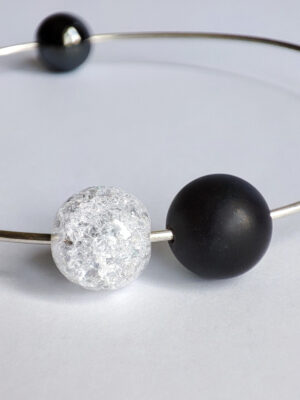
Rita to Luca:
R: This series seems more intimate and personal for me than the latest ones, yet visually very minimalistic and playful design. Do you feel any contradiction between opening up and stepping back to distance simultaneously?
L: Being personal is not a new experience for me, even if it is not evident in my pieces for the viewer. Yes, I feel the contradiction you mention, as I see between the simple, minimalistic objects and their complicated, complex background and between the playful design and the heavy subject.
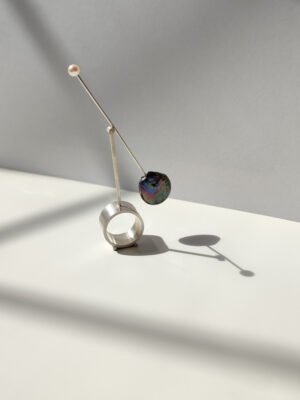
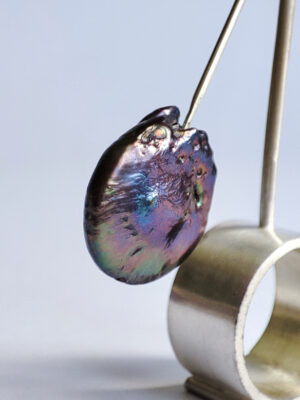
Vica to Juergen:
V: Devotional artifacts are your main inspiration. Are these objects memories from your childhood or something you found in your adult life? Why are they important to you?
J: I have been interested in all religions and their art from the very beginning. Living with religion and living for religion and faith – why do people choose to do this? And each religion has its own aesthetic expression. Monastery works, mandalas, huge gods carved into huge mountains … all made out of love, respect – in inner satisfaction and devotion. My religion is nature – good and evil. Yin and yang.
V: Your process of creating these pieces takes up a very long period of time. What do you enjoy the most in your method, and what is it that you dislike about it?
J: Sometimes working on it is like a kind of inner reflection. It sometimes has an almost religious aspect. It can be absolutely relaxing, exciting, but sometimes also painful and destructive – like true inner love …
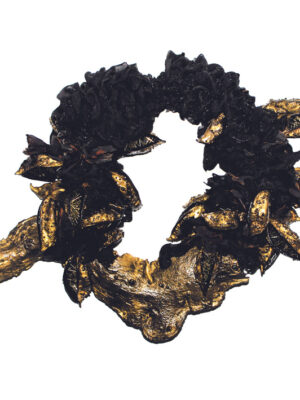
Rita to Juergen:
R: From where do you collect your materials? I mean, is it by accident, or do you go to specific places to search? Do you treasure old things, or buy them somewhere?
J: The materials sometimes find me, sometimes I find them … on walks, while shopping, at work – out there, in fact. Every now and then, friends and family also send me things that they think I would like to transform.
R: Does your artistic process help you in everyday life?
J: … everyday life helps me in my artistic process! Seeing, observing. Birth, blossoming, withering, death … and rebirth. – absolutely breathtaking, isn’t it?!
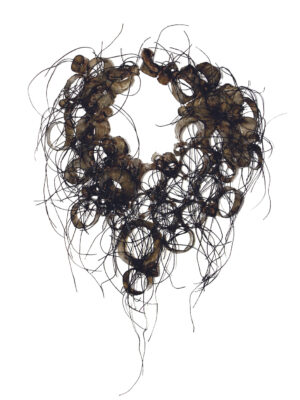
Luca to Juergen:
L: Even your painted pieces have monochrome, natural colours. Is it on purpose that you keep the ‘organic look’, or does it show your personal taste/style?
J: This is simply my inner intuition – nothing more and nothing less. I don’t think when I create. I let my inner self work. My hands only translate.
L: How do you imagine ‘the future’ of your objects? Being worn or displaying them on a table/on the wall?
J: I can’t say. I show them now and then, and every now and then one of the pieces finds a new home. So far all sold pieces have been worn as well as presented as artwork on the wall or shelf. But they are also welcome to stay with me for a while longer. I like to look at them and associate good and bad moments with them – just life.
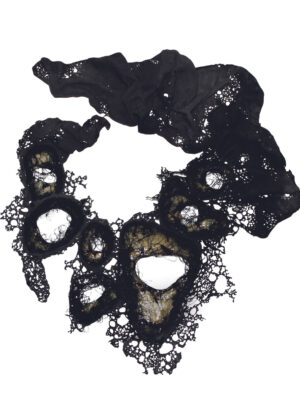
Luca to Lieta:
LU: What is your making process? Do you collect materials randomly and then put them together depending on your project or do you have a certain vision about the future objects and try to collect/buy the most suitable materials?
LI: I make very very little. And more and more I find myself questioning how I make and refining how I relate to the making/visual aspect of my practice. As for materials, I never buy them unless absolutely strictly necessary (I did a little more in the very beginning) or they are reclaimed for reuse. I tend to collect stuff as I go and sometimes I am also gifted some, which really interests me. Over the years I have become really questioning of what and where I gather materials, and the connection between search and research, and finding and finding oneself, is one of the big aspects of my personal research focus.
LU: Are you working on different projects simultaneously or focusing on one subject usually?
LI: My practice spans making, writing, mentoring, teaching, researching and, more recently, curating. So yes, sometimes I have to work on several projects at the same time. But my practice is now based on questioning, and every manifestation of my work drives the next. For example, I found the courage to complete the final piece for Kontrapunkt in the way I wanted through writing a conference lecture which I will be delivering the week after the exhibition. And writing my answers here is helping clarify aspects of that lecture. So everything is driven by the line of research and of questioning, which is constantly moving but also constantly intersecting, if that makes sense…
LU: Do you also work on commissions?
LI: In terms of jewellery, I have done, but it does not suit me. I am not a jeweller in the strictest sense. I wanted to be one, but the more I went on, the more I realised that it just so happened that jewellery had became one of the manifestations of my thinking. But I do take writing commissions, for example for catalogue essays and lectures. And with that I normally get free rein on what I write, apart from the pet hate of mine: the word count.
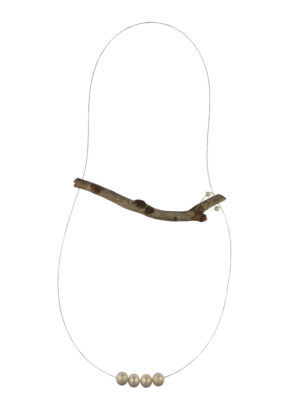
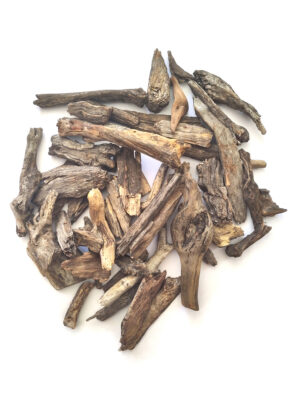
Vica to Lieta:
V: Text is an essential part of your work; it belongs to the pieces you make. With your text, you offer a complete understanding of your work. Why is it necessary, and what does this full understanding mean to you?
L: I guess everything manifests in words for me before it does in any other way. I am also the person that reads all the labels everywhere. Any text that accompanies my visual work, from the title, to the statement, to even the list of materials, is an absolute intrinsic and indivisible part of it. It is my final reflection and it allows me to explore and understand the full extent of that visual manifestation. Normally, it is a reflection on the process of thinking and learning that has happened through the making and how it has changed me or that visual manifestation along the way.
Text also allows me a precision of expression that I could not achieve otherwise. It is when choosing exact words that I get to the bottom of what everything else means. Interestingly, it does this in my adopted language (English), and never in my mother tongue (Italian). And then there’s the full sharing with the viewer of that understanding: again an intrinsic and indivisible part of my practice. The visual and the written are manifestations of my thinking and my questioning. And to me it is nothing unless it is public and shared. And of course text has become a huge part of my work through the writing aspect of my practice. Writing is just another manifestation of my thinking and my learning and growing and questioning.
V: What questions do you ask the viewer with this body of work? And what are the questions you revealed with Kontrapunkt?
L: The project I am exhibiting here was conceived to express what we give up in life, at any time, in order to let something or someone else thrive. So there’s the basic Kontrapunkt narrative. But here I will be showing this project in its evolution from 2015, the last year of my Bachelor, to now to show how art practice is in constant movement. An artist is not a ready-made product and my practice has been in constant flux to the point that I am now starting to question the object-based visual aspect of it. Here I want the viewer to be confronted with the inner conflicts of art practice: the early aspirations, the reality of having to compromise and hating the work you produce as a consequence, and even the inability to create something because you have moved on, which in itself brings a new awareness and new horizons and questions to explore. And this brings me to the questions that revealed themselves: What does it mean to be an artist? How is my practice redefining itself around this question? What do I even call myself?
Rita to Lieta:
R: Do you usually return to older projects from a distanced point of view and work on them again? Is this one of your creative methods, or is this your only project like that? Touching and modifying previously finished works, is it hard work or liberating?
L: This is a really interesting question for me. No, I never return to pieces that are finished, although I never stop reflecting, questioning and learning from the process and thinking behind their making. This project was always unfinished for me, and the reason I decided to exhibit it is exactly to show how the practice of art is being in constant flux. It was a great opportunity to reflect on, but above all to show viewers the reorientation in my goals and aspirations, that new developments don’t always mean progress, and how dramatically my practice has changed over the years.
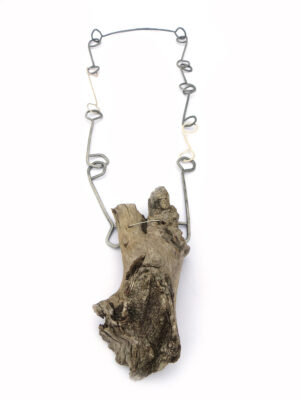
For this, I am so grateful for the space we have at the gallery as it is often very difficult to have enough room, in a group exhibition, to lay out a reflective project like this. As for your second question, it has definitely been very hard work to lay bare this journey to myself and for everybody to see, warts and all! Work that still speaks to me after so many years, but also work that doesn’t, and work that I don’t even know why I made. But it has also been incredibly liberating. I could never fully understand why this project had been left unfinished for so long when I had invested so much energy into it at the beginning. Now it is clear to me that this is because my perspective on what it means to be an artist has changed so much, and this has deeply affected the way I work. While I was desperate to find answers through my art practice, I now believe that my role as an artist is to keep questioning. The most liberating part of this project has been finding the courage to conclude the project without intervening at all in the original materials. Those questions might remain unanswered, but it is their status as questions that is important.
Luca To Vica:
L: Despite the fact that your pieces are not wearable, you display them in a jewellery exhibition. How do you describe jewellery? What makes an object a jewellery piece in your opinion? Is there a difference between jewellery and fine art?
V: I am very curious about this and exploring the boundaries of this field is essential for me. In this collection, the initial idea relates to jewellery, as I wanted to recreate a box of jewellery which was stolen from my grandmother. So I started to make objects for my women ancestors who were long dead. Wearability became redundant, and the whole process was complete freedom of any rules, a flow of creation, and a reconnection. But the starting point is a solid connection to sentimental jewellery objects; therefore, I call these pieces jewellery. I am interested in the change a piece can cause in you both as a maker and as a viewer. And more importantly, my interest is in the connection between the viewer and the maker.
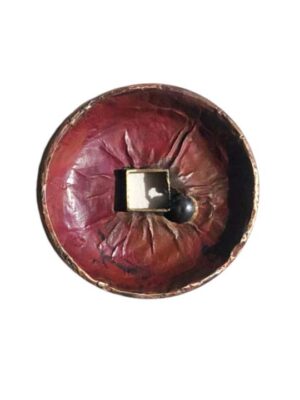
L: Why do you use the same frame for each family member?
V: In my first attempt, I made various sizes of objects, but I wanted a strong connection between these creations. I wanted them to be recognisably one collection and so I started to use identical frames. But I realised that on the one hand, I was giving myself complete freedom, even freedom of wearability, yet I was creating new rules using the same form and size of frames. So in a way, it made me realise that I cannot let myself be free from limitations: I create my own ones – which is also true in my personal life.
Rita to Vica:
R: In this project, you summon ladies from your family who are important to you. What message do you treasure from them?
V: I have this idea that there is a transgenerational message that travels in my family, especially among the female members, that something terrible has to happen before we can have joy or happiness. I think many of us carry similar stories, tragedies that occurred in the lives of the previous generations and traumas that we inherit. Overcoming the pain is a very important message I treasure from them.
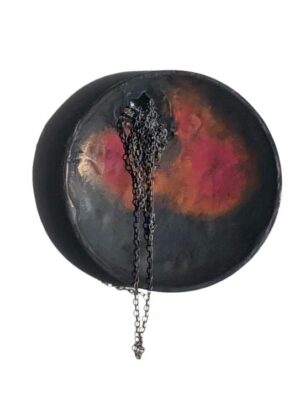
R: What message or question might you mediate to the audience through your pieces?
V: I used a robust frame that holds a very thin copper foil within every piece in the collection. I was playing with the coexistence of the strong and the fragile. And also, you can see that there is a problem, a tragedy with an attempt to solve it, but it is obviously unsolved: the pain just became the protagonist of the piece. But these are not messages: they are just tools for a conversation.
R: Did you figure out something new about yourself being a woman and a mother in your family now?
V: Yes, I understood this vital connection between my fragility and my strength: I can see it in my children too. And also, this project was, in many ways, about freedom. I realised that I can allow myself to create in a state of complete flow, and I was able to get rid of uncomfortable compromises, which also helps my motherhood. My making process often reflects what I am dealing with in my everyday life. So it was a process of self-understanding in many ways.
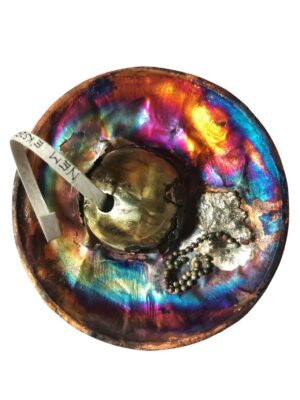
R: Do you have a treasure box like that? What do you keep in it?
V: I have many boxes with unfinished but potentially interesting previous projects. I like to go back and revisit these pieces. I have no objects from my family and this absence of inheritance gave me the idea and was the inspiration for this current exhibition.
Juergen to everybody:
J: What does your jewellery mean to you? And I don’t mean the jewellery piece itself. What drives you to do what you do and where do you see yourselves in future?
V: My jewellery is a way of self-understanding, and a way to connect with others. It is a form of very intimate communication driven by my curiosity. I hope for my future to develop and find new ways of expression, work in different collaborations, and connect with more people.
LI: The one million dollar question! Although I was driven to jewellery in a very instinctive way, it is by now just one of many equal aspects of my practice, together with writing, researching, mentoring and, more recently, curating. I make very little and I don’t need to make jewellery. Partly I feel very disenchanted at the moment with the jewellery world. But mostly I am redefining my practice around the question of what it means for me to be an artist, which is what I am, rather than a jeweller. For me being an artist is not any longer trying to, perhaps naïvely, provide answers for the world but to open up doors to more questions. I am more and more driven by the idea of thinking as praxis. And this is where I see myself in the future: continuing to think and to ask questions.
R: Making jewellery in the last three years became rather like practising art therapy with myself than creating beautiful things to wear or sell. I hardly think about wearability, weight or size. I touch the material that calls me, I guide myself through interesting self-reconnaissances, and I hope to develop my inner self through it. I enjoy it pretty much when somebody finds themselves in my objects and can imagine wearing them or hanging them on their wall. I hope I will have the opportunity to follow my intuitions for a long time more.
LU: Designing and making jewellery helps me get into a flow state when I lose the sense of time and I am completely absorbed in the process of creating an object without having any everyday thoughts in my mind. I enjoy expressing myself by making pieces based on my ideas and also cooperating and working on commissions, so I would like to combine these in my practice.
Lieta to everybody:
LI: In my catalogue text I tried to emphasise, rather than individual projects, an angle that is not often talked about in exhibitions: that of the process of art practice itself. I wanted to focus on how this project had come together and then grown adding more voices to the harmony, and on the constant kontrapunkt of internal and external voices that artists have to manage, as well as the power of collaborative practices. Have you found this viewpoint of the project useful and has it prompted any reflections on the individual and shared processes behind your practices?
V: The last few months were a significant period for me, and because of our regular meetings and conversations, I think I was able to shift my thinking and my designing process. Working on this group exhibition allowed us to understand each other’s works much more deeply. Reading, writing, analysing and questioning as a group helped me understand and reflect on my decisionmaking process. This same interview, as we ask these questions from each other, is also part of this unique collaboration, which I will surely miss a lot.
LU: Organizing a group exhibition with people I do not know well is like being part of – and playing – a jigsaw puzzle. Sometimes it is challenging but worth working on because we all enjoy the whole process. All of us, our thoughts and objects are equally important which is a great experience for me. Solving problems, creating value and figuring things together always motivates and gives me energy.
R: The best part is assembling all the elements of the exhibition. To get to know each other, the way everybody works and makes decisions when every word of our meetings can open another door to a new direction. To be aware of my own solutions and choices. To find invisible common points that become visible by creating pieces in parallel. I can not wait to see everything next to each other in one space. They will finally let out their voices…
J: When Rita asked me if I would like to exhibit with her and Luca, I was immediately on board. I knew Rita’s work from a previous exhibition in which we both participated, and I knew Luca’s work from social media. And then we got bigger … Lieta and Vica joined us and a little hummed melody suddenly became a chant. We are all on different paths, but when I got to experience each other’s work in our Zoom calls, it was totally clear to me that it was exactly our differences that formed a harmonious unity. We didn’t really know each other before, which also led to misunderstandings and confusions. But like in a choir, it takes a little practice and empathy – maybe even some clear words … But in the end all the voices came together to form a great whole. Even though I can’t be there in Budapest … I am really excited about our show together!
Thank you all!
